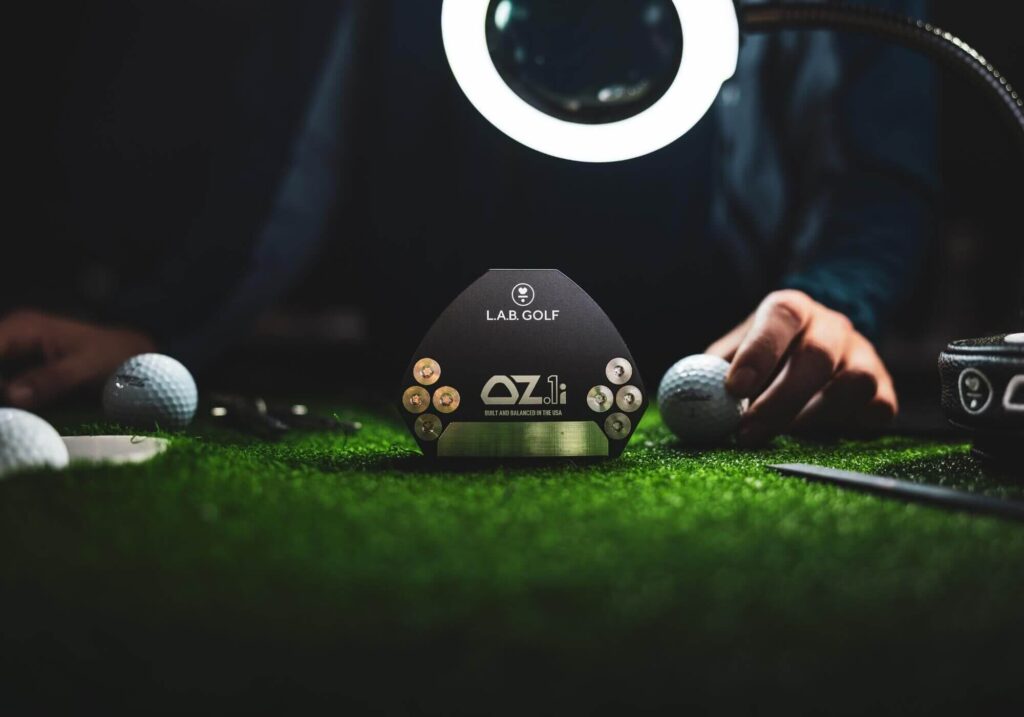The Ultimate Showdown: Zero-Torque vs. Traditional Blade Putters
When it comes to golf, the performance of your putter can significantly influence your score. While many golfers may feel a putter performs better, it’s the cold hard numbers that matter when analyzing effectiveness. In our comprehensive 2025 Most Wanted Zero-Torque Putter Test, the L.A.B. Golf OZ.1i not only topped its category but also left its competitors in the dust. Our curiosity led us to ask: how does this dominant putter compare to one of the lower-performing blade putters from our 2025 Most Wanted Blade Putter Test? The performance gap was glaringly clear—seven strokes.
Understanding PuttView Handicap
At the heart of our tests lies the PuttView handicap, a unique metric that simplifies the evaluation of a putter’s performance. Imagine a golf round but focused solely on putting. Each tester makes hundreds of putts from various distances—five, ten, and twenty feet—while the PuttView system meticulously tracks direction, speed, and proximity to the hole. The data collected translates into a handicap-style number that indicates how many strokes a golfer would gain or lose while using that specific putter.
For instance, a score of –7.6—attributed to the L.A.B. OZ.1i—indicates that an average player would save approximately seven strokes over a full round compared to their baseline performance. Conversely, a score nearer to zero signifies no significant advantage. Thus, this approach allows golfers to make an informed decision when choosing their putter.
The Numbers Reveal a Compelling Story
Curious about the differences in performance, we delved into the numbers gathered during our tests and compared short, medium, and long putt statistics. The results were illuminating. The following table summarizes our findings, including overall PuttView handicap scores and performance across various distances:
| Putter | Source Test | Overall PuttView Handicap | Short | Medium | Long | Avg Miss (ft) |
|---|---|---|---|---|---|---|
| L.A.B. Golf OZ.1i | Zero-Torque | –7.6 | –8.1 | –5.8 | –8.7 | 0.67 |
| PXG Battle Ready II Closer | Blade | –0.6 | –0.8 | 3.4 | –4.3 | 0.87 |
As shown, the OZ.1i consistently produced smaller misses, more accurate rolls, and superior distance control across all distances tested. The visual data illustrating the dispersion patterns between the two putters further underscores these performance differences.
The Science Behind Zero-Torque Technology
So, what sets zero-torque putters like the OZ.1i apart? Designed to maintain a square face throughout the putting stroke, these putters eliminate the unwanted twisting prominent in traditional designs. Traditional putters often rely on the golfer’s timing to square the face at impact, introducing a potential for error. By removing this torque factor, golfers do not have to depend on perfect timing, which is a significant advantage in high-pressure situations.
This ideology forms the foundation of L.A.B. Golf and is substantiated by test data like the one we’ve discussed. Testers who used the L.A.B. OZ.1i provided positive feedback about their experience, highlighting its ease of use and effective distance control.
User Experiences Speak Volumes
Feedback from testers is invaluable and can often highlight features that numbers alone cannot convey. Here are some compelling insights from individuals who experienced the L.A.B. OZ.1i firsthand:
- “Easy to roll, great distance control, and love the press grip.”
- “The angle was perfect at setup—it just rolls end over end every time.”
- “It feels different at first, but once you see how straight the ball rolls, it’s hard to go back.”
These testimonials offer perspective that complements our numerical analysis, reinforcing the idea that a well-designed putter can truly impact a golfer’s game.
Why Understanding Putter Design Matters
For golfers who have relied on blade putters throughout their playing careers, the transition to a zero-torque design might feel like a leap of faith. Many players may appreciate the feel of a traditional putter but are often left vulnerable when timing falters or the face misaligns during critical shots.
The growing body of data indicates that opting for a zero-torque design can mitigate such inconsistencies. This inherent stability during impact can provide noticeable benefits to players of all skill levels. If you haven’t yet had the chance to test a zero-torque putter, this may be an opportune moment to make the switch.
The Implications for Your Game
Understanding how these advancements in putter technology affect your gameplay is essential. Modern zero-torque putters create an improved playing experience, taking away the nagging worry about timing and face alignment that can plague traditional putter users. Every golfer stands to gain from a putter that eliminates twisting during impact, from beginners to seasoned professionals.
Choosing a putter is more than just a matter of comfort or feel; it should also be based on empirical evidence regarding performance. With the compelling data showcased in our tests, it’s clear that selecting a putter like the L.A.B. OZ.1i could enhance your game dramatically.
Conclusion: Take the Leap
Ultimately, the comparison between the L.A.B. Golf OZ.1i and traditional blade putters offers valuable insights into modern golf equipment. While personal preference will always play a role in choosing a putter, prioritizing performance based on quantifiable data is essential.
As technology evolves, golfers have the opportunity to improve their game significantly. So, if you’re still clinging to a traditional blade putter, consider the benefits outlined in our study and explore the possibilities that zero-torque putters present.
With the right equipment, you can equip yourself for success on the green, turning potential strokes into victories. Don’t miss out on experiencing the stability and precision that a zero-torque design can provide; it might just be the missing piece of your golfing puzzle.


